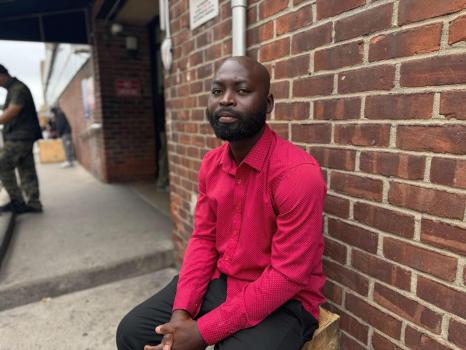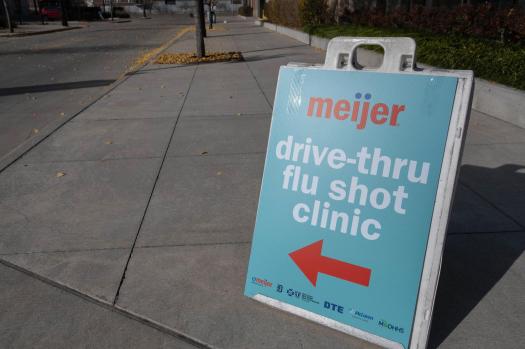Admittedly, redistricting is a complex political custom. In other words, it’s a procedural step that chooses your representative in elected office depending on your residence.
To put it another way, redistricting is all about boundaries and maps.
And politics is undoubtedly the main focus, particularly this year.
On Thursday, August 14, Governor Gavin Newsom held a rally at the National Center for the Preservation of Democracy in downtown Los Angeles to formally launch the state’s mid-cycle redistricting campaign. In a special election on November 4, voters will have the last say on whether to create new congressional districts in the state for the elections in 2026, 2028, and 2030, according to Newsom.
In an attempt to offset similar, Republican-led schemes elsewhere in the nation to strengthen the GOP, the concept is partisan and aims to give Democrats an advantage in the state’s congressional elections.
Here are some frequently asked and answered questions about redistricting, including what it is, how it usually works in California, and what it means for you.
The process that establishes the borders for electoral districts for the state legislature, Congress, and other elected offices—such as the California State Board of Equalization districts—is known as redistricting.
In plainer terms, it is the process of creating maps. Voters then utilize those maps to determine which districts, including the U.S. House, they are eligible to vote in depending on their residence.
This typically occurs every ten years, following the release of fresh census data that provides a more accurate picture of the population and the distribution of residents. Different states have different procedures for creating these borders, or maps, but in California, a committee of commissioners are in charge of doing so. They base their decisions not on partisan politics but on what is best for voter representation.
However, in anticipation of the 2026 midterm elections, President Donald Trump put pressure on Republican-controlled states to alter their congressional borders in favor of the GOP, and as a result, a number of states nationwide are contemplating what is known as mid-cycle redistricting this year. Although the U.S. Senate, House of Representatives, and White House are currently controlled by Republicans, midterm elections typically benefit the party that is not in power, which would indicate the Democratic Party for 2026.
District lines for congressional and legislative seats were previously decided by the California Legislature, just like in other states. However, that was altered in 2008 when voters narrowly approved a proposal assigning that duty to a panel of impartial commissioners.
There are five Republicans, five Democrats, and four members who are not associated with either of the two major parties on the 14-member California Citizens Redistricting Commission.
They gather public opinions on maps and host public hearings. They examine geographic borders and census data. Additionally, when creating maps, they take into account communities, neighborhoods, and minority populations, making sure that these groups are maintained together in districts to the greatest extent feasible.
Voters will determine whether to modify the state’s congressional maps for the upcoming three elections—the 2026 midterms, the 2028 and 2030 elections—in a special election called by Newsom on November 4.
For democracy, Newsom is calling the endeavor a five-alarm inferno.
According to the governor, we cannot watch helplessly while this democracy is destroyed district by district around the nation.
The majority of Republicans are against this approach.
According to GOP Representative Young Kim, who represents areas in Orange, Riverside, and San Bernardino counties, Californians have made it clear that they want an independent redistricting process.
According to Kim, altering that for partisan purposes disenfranchises voters and erodes confidence in our political system.
Although Texas has received most of the attention, Newsom has stated that California’s redistricting plans are triggered if any Republican state proceeds with partisan, mid-cycle redistricting.
Prior to the 2026 midterm elections, Trump is pressuring Texas and other red states to alter their maps in favor of Republicans. According to the president, his party has a right to five additional seats in Texas.
Republican Governor Greg Abbott has issued a warning, stating that if California gerrymanders, Texas might remove ten Democrats from our state.
In contrast, Texas has had difficulty approving new congressional districts in recent weeks as a result of Democratic lawmakers leaving the state to stop the creation of new maps. During the deadlock, a number of people have traveled to California and spoken with Newsom and former House Speaker Nancy Pelosi.
Redrawing electoral maps to benefit a specific political party or demographic is known as gerrymandering.
Gerrymandering is not unlawful, despite the fact that it is typically viewed as taboo or derogatory. In a divided ruling in 2019, the U.S. Supreme Court held that federal judges are not allowed to comment on cases involving partisan gerrymandering. In 2024, the nation’s top court disagreed with a lower court’s decision that the lines of a congressional district in South Carolina were racially gerrymandered and discriminatory against Black voters, siding instead with the state’s Republican legislature.
Elbridge Gerry, the previous governor of Massachusetts, molded his name with the word salamander to create the term “gerrymander.” When Gerry approved a redistricting measure for state Senate seats in 1812, the Boston Gazette used it to describe a district that looked somewhat like a salamander. (President James Madison later appointed Gerry as vice president of the United States.)
Indeed. Any alteration to these maps, such as redistricting, may have an effect on who represents you or appears on your ballot the next year.
California is solely thinking about redrawing congressional maps in this instance; state legislative district patterns are not being considered. Therefore, your representative in the House of Representatives may change as a result of redistricting.
Using the House website, you can determine your congressional representative and the district in which you reside.
Simply enter your ZIP code; to find your congressman and congressional district, you might also need to give your street address.
Related Articles
-
President Trump ramps up takeover of Washington s police department. Here s what to know
-
Puerto Rico cashes in on Bad Bunny as thousands flock to the island for his concerts
-
Solar panels that fit on your balcony or deck are gaining traction in the US
-
Trump s safe and beautiful move against DC homeless camps looks like ugliness to those targeted
-
U.S. stocks tap the brakes as Wall Street heads toward the finish of a record-setting week












